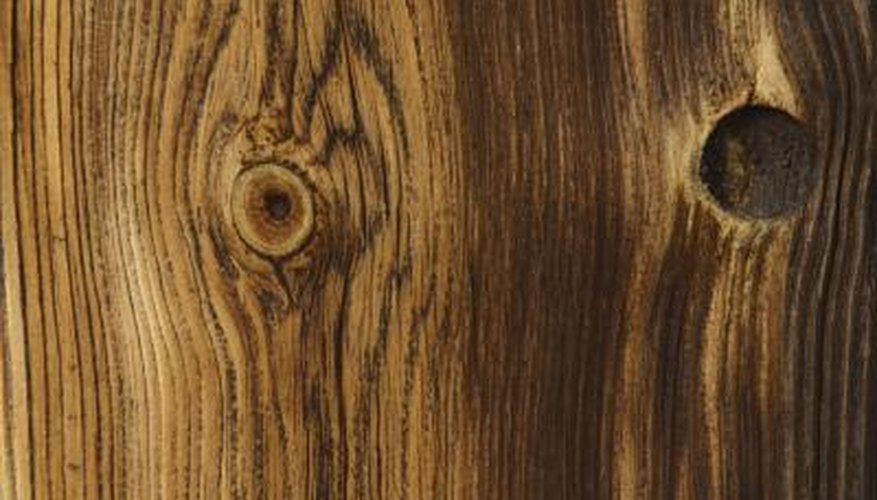Privacy fences consist of tall slats spaced closely together to enclose a yard and create privacy. Some wooden boards have knot holes that start as round, rough patches but can enlarge to a hole after exposure to outdoor elements. To fill knot holes in the fence, use a standard wood filling product. After painting the fence, the knot hole repair is indistinguishable from the remaining portions of the wooden fence.
Open a tub of wood putty. Dip a flexible 1-inch wide putty knife into the tub and scoop up 1 or 2 tsp of the putty.
- Privacy fences consist of tall slats spaced closely together to enclose a yard and create privacy.
- Dip a flexible 1-inch wide putty knife into the tub and scoop up 1 or 2 tsp of the putty.
Turn the putty knife so that the putty faces the knot hole and position it at a 30-degree angle. Spread the putty into the fence starting 1/2 inch outside the knot hole. Spread it smoothly over the entire hole, just skimming the surface of the hole.
Walk to the other side of the fence and repeat the process to fill in the other side of the knot hole with a thin layer of the wood putty. Use smooth, long strokes and keep the putty knife flat so that you don't dislodge the putty previously applied.
Allow the wood putty to dry for the length of time indicated on the packaging and then touch it gently to ensure it is no longer wet and feels hard.
- Walk to the other side of the fence and repeat the process to fill in the other side of the knot hole with a thin layer of the wood putty.
- Allow the wood putty to dry for the length of time indicated on the packaging and then touch it gently to ensure it is no longer wet and feels hard.
Sand the surface of the fence with medium-grit sandpaper until the top of the wood putty is smooth and blends in perfectly with the surrounding fence wood.
Wipe the fence board down with a cloth to remove the sanding dust. Apply paint primer on top of the wood putty and allow it to dry. Paint the fence the desired colour to conceal the repair.
TIP
You may need to apply the putty in two coats, allowing the first to dry completely before filling in the remainder of the hole. If you plan to stain the fence instead of painting it, use an oil-based primer instead of white paint primer. You can leave the putty unpainted, but it may absorb moisture from rain and deteriorate quicker.
